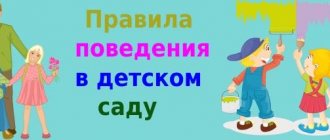What it is
There are a huge number of definitions of this concept. To summarize them, game therapy is a method of psychological or psychotherapeutic influence on a person using games.
At the same time, experts clearly distinguish between two concepts:
- Play therapy is a psychological tool that only has the power to correct emotional and behavioral disorders.
- Play psychotherapy is a psychotherapy tool that deals with the treatment of borderline personality and behavior disorders.
Game therapy differs from ordinary play in that it is an organized play activity that has a therapeutic and corrective effect. It is carried out in specially created conditions under the close attention of a psychologist or psychotherapist and has clearly defined goals. The usual game is entertaining and occurs spontaneously, without outside interference.
You should also understand the difference between play therapy and role play. The latter can be presented in two forms.
- As one of the play therapy techniques
The specialist invites a group of patients to simulate events occurring under certain conditions. Participants must act according to their character's inner beliefs. At the same time, it is assumed that their actions will reflect their true motives, which they may, for one reason or another, hide in reality. Here, a role-playing game helps the play therapist understand what exactly is happening to his patient and in what direction to carry out further correction or treatment. She can also demonstrate one of the solutions to a problematic life situation.
- As an entertainment event
An ordinary role-playing game, outside the sphere of psychology and psychotherapy, although distinguished by a clear organization, is still entertaining in nature. All participants fulfill a specific goal set for their characters, the master’s task is to ensure that all the rules are followed, but nothing more.
Examples of games for home
Naturally, full-fledged classes should be conducted by a specialist, but parents can provide invaluable assistance to the child by communicating and playing with him. What can a preschooler do outside of kindergarten? Familiar exercises will come to the aid of all of us.
- Fun in the sandbox. In the sandbox, during games in the fresh air, the most bizarre shapes are modeled from wet sand using different molds.
- Magic mirror. Sitting opposite, the baby and mom (dad) repeat gestures and facial expressions one after another, like reflections in a mirror.
- Snowmen. Parents and children pretend to be snowmen, gradually melting right down to the puddle.
- Swamp. You can cut out special bumps from paper, the size of two feet, or you can just use newspapers and arrange races around the room, moving only through such safe places, trying not to get on the floor, which has become a swamp.
On practice
For preschoolers
For young children, play activity is the leading one. Therefore, most activities in kindergarten are based on it.
What kind of games and exercises can be used for preschool children aged 3-4 years:
If at 3-4 years the main task of play therapy is training and development (of the same cognitive abilities), then at 6-7 years it acquires a more diagnostic and corrective nature, allowing the correction of psychological problems.
For children 6-7 years old:
For problem children
Play therapy in childhood can effectively treat all kinds of personality and behavior disorders.
For children with disabilities
Play for children with disabilities often remains the only way to express themselves due to their specific characteristics. At the same time, it allows specialists to help treat the underlying disease and develop the child as much as possible.
Recommended: finger (Bird, Horned Goat, Bell), with waste material (laces, clothespins, beads, buttons), educational (construction set, mosaic, puzzles).
With anxious children
Research shows that play therapy has a harmonizing and corrective effect on the level of anxiety in children and on their mental state in general.
Relaxation and breathing exercises: Fight, Balloon, Gift under the tree, Piper, Barbell. For relaxation: Dancing hands, Waterfall. To develop a sense of trust and self-confidence: Bunnies and elephants, Change of rhythms and many others.
For preschoolers with aggression
Children become aggressive because they have nowhere to throw out the negative energy accumulated as a result of psychological trauma. Play therapy helps them with this.
To relieve muscle tension: Ball, Circus, Chase away Baba Yaga, Caricature, Let's make a fairy tale, Glue rain. For such children, outdoor play activities will also be useful: Two rams, Tukh-tibi-duh, Ask for a toy (in verbal and non-verbal versions).
Who is better for a child to play with?
It is impossible to answer this question unambiguously. It all depends on the goals described above. If it is necessary to reveal potential or slightly correct behavior, then it will be comfortable and adaptive to do this with parents. After all, they are the ones who know their baby better than anyone else and will find an approach to him. And the child will be more comfortable playing with relatives. Regular trips to the office with a “Psychologist” sign can themselves cause stress, which is unnecessary if the baby is just a little capricious, for example.
Parents cannot always cope with psychological disorders on their own due to many factors: subjectivity, lack of appropriate education, time, desire, and others. Therefore, in such cases, it is better to contact a play therapist who, if necessary, will involve both mom and dad in the game or teach them how to play at home.
Indications for use of the method
For small children, everything is a game. Therefore, it is impossible to highlight significant evidence, since games are the main leisure time for children. When children play, they are in a good mood and do not regard it as something unpleasant and repulsive. Game therapy products are effective in the following cases:
- phobias;
- unsociability, isolation;
- aggression towards others and animals;
- disobedience or excessive obedience;
- problems in relationships with parents, brothers and sisters, etc.;
- retardation in speech development;
- bad habits (for example, chewing a pencil while drawing);
- constant stress;
- problems with academic performance;
- problems with reading. Source: O'Connor K. Theory and practice of play psychotherapy. - St. Petersburg, 2002.
Main types and forms of play therapy
Depending on the degree of intervention in the game by a specialist
- Directive
The play therapist is the organizer and leader of the entire game process. He takes an active part in it, asks questions, directs, and plays a character himself. He takes responsibility for achieving his goals.
- Non-directive
The play therapist is an observer from the outside. Only at the very beginning does he determine the rules of the game, and then does not interfere in the process and watches how the participants behave. Only the most general goals are set (to help restore mental balance, overcome fear, learn socialization skills), but not specific ones. This is explained by the fact that it is unknown how this or that character will behave and what he will come to by the end of the game.
Depending on the theoretical model
- Psychoanalytic (psychodynamic)
Founders: A. Freud, D. W. Winnicott, M. Klein. In psychoanalysis, spontaneous play activity is the direct and surest path to the unconscious, a way of processing the experience of early psychotraumas and conflicts. Recently, sand play therapy has gained great popularity within the Jungian school of psychoanalysis.
According to research, sand play therapy stabilizes the emotional state, helps express emotional experiences, relieves fears, and relieves psychological stress. You can draw anything on the sand and not be afraid to make a mistake, because everything can be easily and repeatedly corrected with one movement of the hand.
- Humanistic/centered
Founders: V. Exline, K. R. Rogers, G. L. Landreth. Refers to non-directive play therapy. The main condition is spontaneity.
- Behavioral
Founders: B.F. Skinner, A. Bandura. The main function is performed by a play therapist - teaching how to correctly play social roles.
- Liberating
Founder: D. M. Levy. Creating gaming conditions that provide the opportunity to relive a conflict, traumatic situation, but in a calmer and safer environment. This allows you to free yourself from tension and fears.
- Structured
Founder: G. Hembridge. Creating a clearly structured game situation that allows you to solve specific problems.
- Relationship building
Founders: O. Rank, Taft, F. Allen. The relationship between the play therapist and the client is built on the “here and now” principle, without references to past experience and a return to childhood.
- Primitive
Promotes children's intellectual, emotional, physical and social development through appropriate learning opportunities.
- Integrative-eclectic
Harmoniously includes elements of all previous directions.
Depending on the material used
- Unstructured
Involves the use of outdoor games (jumping, climbing), exercises and tasks with water, clay, plasticine, sand, and art therapy. With all this unstructured material you can express your hidden desires. He develops sublimation.
- Structured
Involves the use of family games, with puppets, dolls, construction, aggressive (using toy weapons). Helps to see a person’s constructive and destructive intentions.
Depending on the duration of the course
- Short-term - from 2-3 lessons to 1 month;
- long-term - from 1 month to 1.5 years.
Depending on the number of people
- Individual - work with one client;
- group - for children 4-5 years old, a group of no more than 4 people is created; for 5-11 years old - 6, for 11-14 - 8, starting from 15 - 10.
Specialists must be clearly aware that there is only one contraindication for individual play therapy - a deep degree of MR. For a group there are quite a lot of them:
- pathological jealousy;
- competition with siblings;
- antisocial behavior, when a person (child) may pose a threat to other group members;
- early or accelerated sexual development;
- excessive aggressiveness;
- aggravated stress state.
What is not a contraindication for group play therapy:
- need for communication;
- the desire to earn approval from others;
- desire for high social status;
- minor deviations in behavior due to the lack of basic social skills;
- lack of love;
- internal complexes, low self-esteem.
Group play therapy is organized only if the child has developed a system of basic social skills and communicative orientation.










